The Enchanting Water Hyacinth: A Comprehensive Guide with Quick Stats
Floating like a delicate crown across still waters, the Water Hyacinth (Eichhornia crassipes) is one of the most beautiful — and controversial — aquatic plants in the world. With its lavender blossoms, thick green leaves, and rapid growth, this floating plant adds a striking touch to outdoor ponds and large tanks.
But don’t let its beauty fool you. Water Hyacinth grows fast — sometimes too fast — and can become invasive if not managed properly. In this guide, we’ll explore the fascinating world of Water Hyacinth, from its aesthetic value and care requirements to the ecological concerns it brings. Quick care stats included for hobbyists who want a summary at a glance.
- Quick Facts About Water Hyacinth
- Origin and Habitat
- Description of Water Hyacinth
- Growing Water Hyacinth in Aquatic Environments
- Propagation of Water Hyacinth
- Plant-Eating Fish
- Benefits and Challenges
- Purchasing and Quarantine
- FAQs
Quick Facts About Water Hyacinth

- Origin: Native to Amazon Basin, South America; invasive globally (Africa, Asia, Australia, North America).
- Appearance: Glossy green, rounded leaves; buoyant petioles; lavender flowers with yellow-blue centers; long, feathery roots.
- Size: 10–20 inches tall, roots up to 3 feet, forms dense mats.
- Growth Rate: Doubles every 10–15 days in warm, nutrient-rich water with ample sunlight.
- Habitat: Thrives in still/slow-moving freshwater (ponds, lakes, rivers); prefers eutrophic waters.
- Temperature: Optimal 75–85°F; tolerates 50°F; dies in frost.
- pH: Prefers 7.0–7.5; tolerates 5.5–8.5.
- Toxicity: Non-toxic but ecologically disruptive, forming mats that reduce oxygen and sunlight.
- Care: Needs full sun, warm temperatures; requires thinning to prevent overgrowth; avoid release into natural waters.
- Propagation: Vegetative via stolons; seeds less common.
- Winter Care: Indoor aquariums or heated ponds above 60°F; compost in spring.
- Ecological Impact: Invasive; clogs waterways, harms biodiversity; used in wastewater treatment, biofuel, crafts.
- Control: Physical removal, biological (weevils), or chemical; prevention critical.
- Cultural Significance: Valued for beauty/utility in some areas, criticized as invasive in others.
Origin and Habitat
Originating from the serene waters of the Amazon Basin in South America, primarily Brazil, the Water Hyacinth (Eichhornia crassipes) thrives in slow-moving rivers, ponds, lakes, canals, and wetlands. Its vibrant foliage and delicate lavender blooms enhance the natural beauty of these freshwater environments. The plant’s buoyant, rosette-forming leaves allow it to float effortlessly on the water’s surface, creating dense mats that provide shade and habitat for aquatic life.
In its native habitat, Water Hyacinth flourishes in warm, nutrient-rich waters, often in tropical and subtropical climates. Its ability to rapidly spread has led to its introduction in waterways across Africa, Asia, Australia, and North America, where it adapts to a wide range of conditions, from still ponds to sluggish streams. The plant’s striking appearance, with glossy green leaves and vibrant flowers, makes it a natural centerpiece in these ecosystems.
In aquascaping, Water Hyacinth is valued for its aesthetic appeal and ability to oxygenate water, often used in open-top aquariums or outdoor ponds to create a lush, natural look. Its floating nature allows it to be easily incorporated into setups without the need for anchoring, adding a dynamic, free-flowing element to aquatic displays while supporting a balanced ecosystem.
Description of Water Hyacinth

The Water Hyacinth is a striking aquatic plant, celebrated for its elegant appearance and buoyant structure, which allows it to float gracefully on water surfaces. Its key characteristics include:
Vibrant Lavender Flowers: Clustered in spikes of 8–15 blooms, these pale purple flowers feature a distinctive yellow and blue center, adding a splash of color that contrasts beautifully with the foliage. Flowering typically occurs in warm seasons under optimal conditions.
Glossy Green Leaves: Broad, rounded to oval-shaped leaves, arranged in a buoyant rosette, are glossy and waxy, aiding in flotation due to air-filled petioles (leaf stalks). These leaves maximize sunlight absorption for rapid growth.
Feathery Roots: Long, dark, and fibrous roots dangle beneath the plant, extending up to 3 feet (1 meter) into the water. These roots efficiently absorb nutrients, contributing to the plant’s ability to thrive in eutrophic (nutrient-rich) waters.
Rapid Growth: Under ideal conditions—ample sunlight, warm temperatures, and nutrient-rich water—the Water Hyacinth can double its population every 10–15 days, forming expansive mats that can cover entire water surfaces.
Size: Typically grows 10–20 inches (25–50 cm) in height above the water surface, with dense colonies spreading several feet wide, creating a visually striking presence in aquatic environments.
Beyond its aesthetic appeal, the Water Hyacinth’s rapid growth and nutrient-absorbing roots make it valuable for phytoremediation, such as cleaning polluted water by removing heavy metals and excess nutrients. However, its unchecked proliferation in non-native ecosystems can lead to significant ecological challenges, necessitating careful management.
Growing Water Hyacinth in Aquatic Environments
Water Hyacinth (Eichhornia crassipes), with its vibrant lavender flowers and glossy green leaves, is a visually striking aquatic plant ideal for ornamental ponds and aquariums. Its rapid growth, capable of doubling every 10–15 days, makes it a favorite for adding beauty to water features but also demands careful management to prevent ecological issues, particularly in regions where it is invasive. Cultivating Water Hyacinth requires attention to tank size, water parameters, lighting, and nutrient needs to ensure healthy growth while mitigating its potential to overrun aquatic environments.
To thrive, Water Hyacinth requires specific conditions in controlled settings like aquariums or ponds. A minimum 10-gallon (38-liter) tank suits a single plant, though larger tanks (20 gallons or more) or ponds are better for multiple plants to accommodate their rapid spread.
The plant prefers freshwater with a slightly alkaline pH of 7.0–7.5, though it tolerates a range of 5.5–8.5, and thrives in warm water between 75–85°F (24–29°C). Growth slows below 60°F (15.5°C), and the plant cannot survive frost. In colder climates, relocate plants indoors to heated aquariums or greenhouses during winter. Water hardness is flexible, tolerating 3–18 dGH, making it adaptable to various aquatic setups.
Lighting is critical for Water Hyacinth’s photosynthesis, growth, and flowering. It requires at least 6 hours of direct sunlight daily in outdoor ponds or containers placed in unshaded areas. For indoor setups, full-spectrum aquarium or grow lights (6500K or higher) should provide 10–12 hours of illumination, positioned 12–18 inches above the water to avoid overheating. Insufficient light leads to yellowing leaves, stunted growth, and a lack of flowers, so adjust light intensity or duration if these signs appear.
As a free-floating plant, Water Hyacinth needs no substrate, with its feathery roots absorbing nutrients directly from the water column. Nutrient and CO2 management is straightforward due to the plant’s efficiency. Water Hyacinth absorbs CO2 from the air through its leaves, making supplementation unnecessary in most cases, though high CO2 levels in aquariums may enhance growth.
In nutrient-rich ponds, fish waste or organic matter often provides sufficient nitrogen, phosphorus, and potassium. In low-nutrient environments, such as sterile aquariums, a water-soluble aquarium plant fertilizer applied every 2–4 weeks supports healthy development. Over-fertilization should be avoided to prevent algae blooms, which can degrade water quality. The plant’s roots also excel at phytoremediation, absorbing excess nutrients to improve water clarity in controlled settings.
Cultivation involves simple yet vigilant practices to maintain a balanced aquatic environment. Place Water Hyacinth on the water surface of still or slow-moving water, allowing its roots to dangle freely. Regularly thin the population to prevent overcrowding, which can deplete oxygen and block sunlight, harming aquatic ecosystems. Monitor for pests like aphids or spider mites, and remove dying plants to maintain water quality.
In regions where Water Hyacinth is invasive, use non-draining containers to prevent accidental release into natural waterways, and check local regulations, as some areas prohibit cultivation without permits. For winter care, move plants to indoor aquariums or heated greenhouses above 60°F, or compost excess plants and acquire new ones in spring.
Container-based cultivation is an effective way to control Water Hyacinth’s spread. Use spacious, non-toxic containers filled with dechlorinated or rainwater, maintaining a pH of 7.0–7.5 and temperatures of 75–85°F. Limit the number of plants to avoid overcrowding, and trim stolons to manage growth.
Weekly water testing ensures stable pH and nutrient levels, while prompt removal of unhealthy parts prevents disease. By adhering to these guidelines, Water Hyacinth can enhance the aesthetic appeal of aquatic environments while minimizing its invasive potential through responsible management.
Propagation of Water Hyacinth

Water Hyacinth is prized for its rapid and effortless propagation, making it a popular ornamental plant for aquatic environments, though its invasive potential requires careful management. Primarily reproducing vegetatively, it produces stolons—horizontal stems that extend from the parent plant, forming daughter plants with their own roots, leaves, and buoyant petioles.
Under optimal conditions, such as warm temperatures (75–85°F) and nutrient-rich water, a single plant can generate dozens of daughter plants within weeks, quickly forming dense colonies that enhance the aesthetic appeal of ponds or aquariums but can overwhelm ecosystems if unchecked.
To propagate intentionally, gently detach daughter plants once they develop 3–4 leaves and a robust root system, using clean hands or tools to avoid damaging their delicate structures. Place these separated plants on the water surface, where they will float freely and continue growing, absorbing nutrients directly through their feathery roots without needing substrate or anchoring. This simplicity makes Water Hyacinth easy to cultivate, but regular monitoring and thinning are crucial to prevent overcrowding, which can deplete oxygen, block sunlight, and harm aquatic life.
Responsible propagation is essential due to the plant’s invasive nature in non-native regions. Never release Water Hyacinth into natural water bodies like rivers or lakes, as it can outcompete native species and disrupt ecosystems. Excess plants should be composted or sealed for disposal to avoid unintentional spread. Always check local regulations, as some areas prohibit cultivation or require permits to prevent environmental harm, ensuring that this striking plant remains a controlled addition to aquatic settings.
Plant-Eating Fish

When cultivating Water Hyacinth (Eichhornia crassipes) in aquariums or ponds, certain herbivorous or omnivorous fish may damage the plants. Careful selection and monitoring of tank or pond mates are essential to protect Water Hyacinth:
Goldfish and Koi: These common pond fish are known to nibble on the roots and leaves of Water Hyacinth, potentially causing significant damage. Their grazing can weaken plants or prevent new growth.
Cichlids: Some species, such as certain African cichlids (e.g., Tilapia spp.), are omnivorous and may consume plant material, including Water Hyacinth leaves and roots, especially if underfed.
Plecos (Plecostomus): Primarily algae eaters, some pleco species may inadvertently harm Water Hyacinth by scraping roots or leaves while foraging for algae or biofilm.
Silver Dollars and Tinfoil Barbs: These herbivorous or omnivorous fish are particularly likely to eat Water Hyacinth, as they prefer soft, leafy plant material. Their feeding can quickly decimate plant populations.
Mitigation: To deter fish from consuming Water Hyacinth, provide alternative vegetable-based foods, such as blanched zucchini, spinach, or commercial herbivore pellets. Ensure fish are well-fed to reduce their interest in plants, and monitor plant health regularly for signs of grazing damage.
Benefits and Challenges
Water Hyacinth offers numerous benefits in controlled aquatic environments but poses significant challenges due to its invasive potential. Understanding both aspects is crucial for responsible cultivation.
Benefits:
- Water Purification: Water Hyacinth excels at phytoremediation, absorbing toxins (e.g., heavy metals like lead and mercury) and excess nutrients (e.g., nitrogen and phosphorus) from water. This improves water clarity and reduces the risk of algal blooms, making it valuable for wastewater treatment or maintaining clean ponds.
- Habitat Creation: The plant’s dense mats provide shade, shelter, and breeding grounds for fish, invertebrates (e.g., shrimp and snails), and birds. The roots offer a surface for microorganisms, which serve as food for small aquatic species.
- Aesthetics: With its glossy green leaves and vibrant lavender flowers, Water Hyacinth adds striking beauty to ponds, aquariums, and water gardens, enhancing visual appeal.
- Soil Enrichment: Decomposed Water Hyacinth plants can be composted to create nutrient-rich organic matter for garden soil, providing a sustainable way to repurpose excess plants.
Challenges
- Invasiveness: Water Hyacinth’s rapid growth and ability to double every 10–15 days under optimal conditions make it a notorious invasive species in non-native regions. It can dominate water bodies, outcompeting native plants and disrupting ecosystems.
- Biodiversity Impact: Dense mats block sunlight, reducing photosynthesis for submerged plants, and deplete oxygen levels, harming fish and other aquatic life. This can lead to significant biodiversity loss in affected areas.
- Waterway Obstruction: Thick Water Hyacinth mats obstruct boating, fishing, and irrigation by clogging waterways and impeding water flow. In severe cases, they can disrupt hydropower systems or flood control.
- Pest Breeding: Stagnant water beneath dense mats creates breeding grounds for mosquitoes and other pests, potentially increasing the risk of diseases like malaria in tropical regions.
Purchasing and Quarantine
 Water Hyacinth live plants for sale #ad
Water Hyacinth live plants for sale #ad
To ensure healthy Water Hyacinth plants and prevent the introduction of pests or diseases, follow these guidelines for purchasing and acclimatizing:
Purchasing: Source plants from reputable suppliers, such as licensed aquatic plant nurseries or trusted online retailers. Choose specimens with bright green, glossy leaves, vibrant flowers (if present), and robust, dark, feathery roots. Avoid plants with yellowing leaves, rot, or signs of pest damage.
Quarantine: Isolate new plants in a separate tank or container for at least two weeks to monitor for pests (e.g., aphids, spider mites) or diseases (e.g., fungal infections). Use dechlorinated water with similar parameters to the main tank or pond (pH 7.0–7.5, 75–85°F). Treat any issues with gentle rinsing or approved aquatic-safe treatments before introduction.
Acclimatization: Gradually introduce plants to the main tank or pond by matching water conditions (temperature, pH, and hardness) over 1–2 days. Float plants in a container within the main system to allow slow adjustment, preventing stress or shock.
FAQs
Do Water Hyacinths require substrate?
No, Water Hyacinths are free-floating plants that absorb nutrients directly through their feathery roots, requiring no substrate or anchoring.
Are Water Hyacinths banned in the UK?
Yes, under EU Regulation 1143/2014, retained in UK law post-Brexit, Water Hyacinth is classified as an invasive species. It is illegal to import, sell, grow, or release it into the wild in the UK due to its potential to harm ecosystems.
Are Water Hyacinths dangerous to fish?
Not directly; their roots provide shelter and food for microorganisms that benefit fish. However, uncontrolled growth can form dense mats that reduce oxygen and light, potentially harming fish and other aquatic life.
Why are Water Hyacinths a threat?
Their rapid growth (doubling every 10–15 days) forms dense mats that block sunlight, deplete oxygen, disrupt water flow, and outcompete native species. This can lead to biodiversity loss, waterway obstruction, and pest breeding, making Water Hyacinth a significant ecological threat in non-native regions.

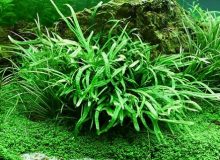
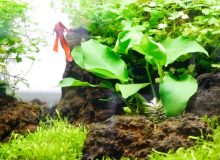
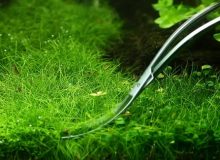

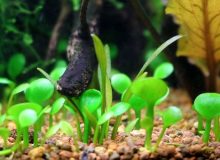
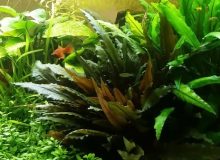
Leave a Reply